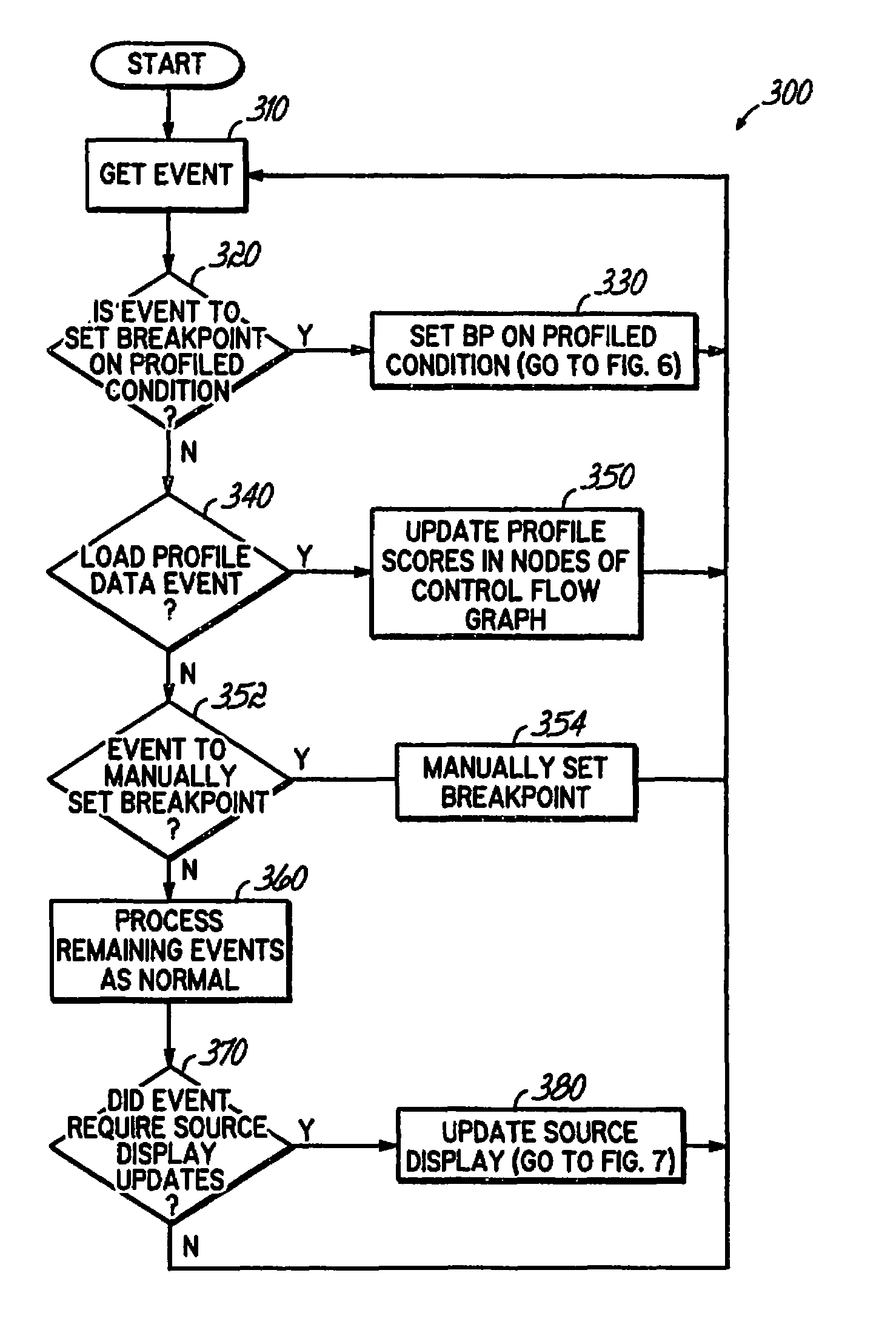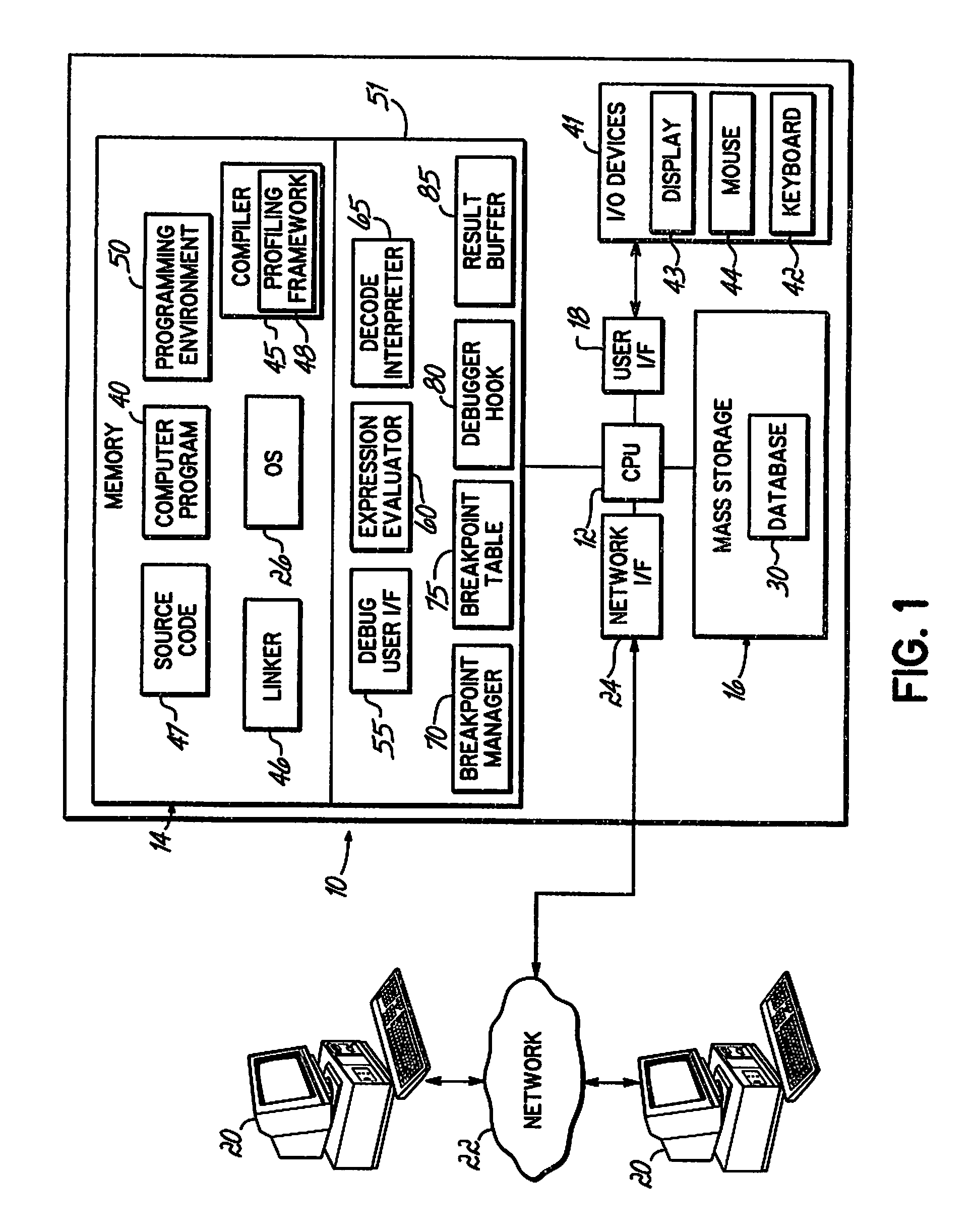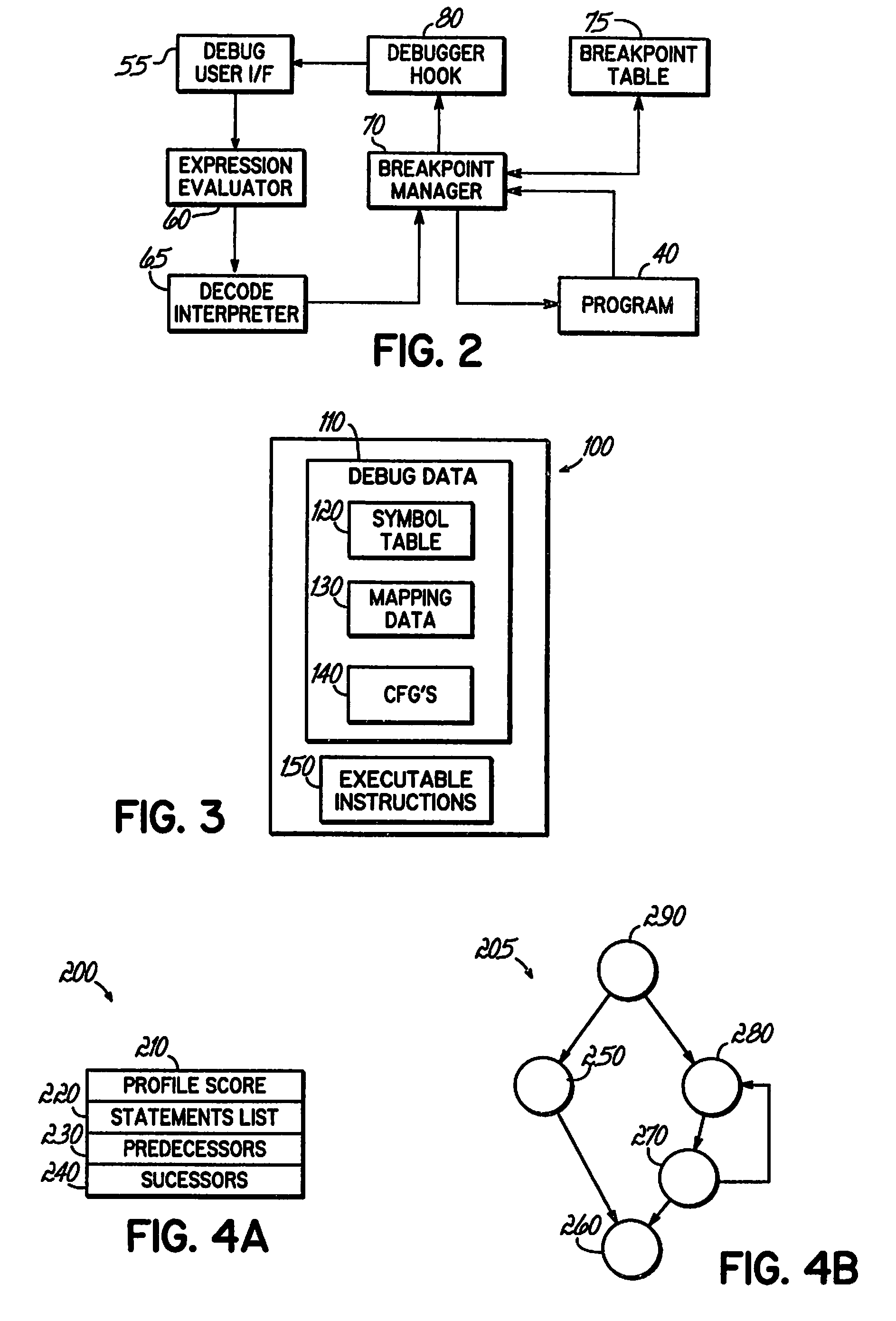Identifying a potential breakpoint location in a code path in a computer program based upon the frequency of execution of the code path as identified in collected profile data
a technology of profile data and code path, applied in the field of breakpoints for debugging computer programs, can solve the problems of identifying the location of breakpoints, halting the execution of the program, and stepping through hundreds or thousands of program instructions, etc., and achieve the effect of more efficient debugging
- Summary
- Abstract
- Description
- Claims
- Application Information
AI Technical Summary
Benefits of technology
Problems solved by technology
Method used
Image
Examples
Embodiment Construction
[0021]Turning now to the Drawings, wherein like numbers denote like parts throughout the several views, FIG. 1 illustrates an exemplary hardware environment for an apparatus 10 for implementing the identification of breakpoint locations consistent with the invention. For the purposes of the invention, apparatus 10 may represent practically any type of computer, computer system or other programmable electronic device, including a client computer, a server computer, a portable computer, a handheld computer, an embedded controller, etc. Moreover, apparatus 10 may be implemented using one or more networked computers, e.g., in a cluster or other distributed computing system. Apparatus 10 will hereinafter also be referred to as a “computer,” although it should be appreciated that the term “apparatus” may also include other suitable programmable electronic devices consistent with the invention.
[0022]Computer 10 typically includes a central processing unit (CPU) 12 including one or more mic...
PUM
 Login to View More
Login to View More Abstract
Description
Claims
Application Information
 Login to View More
Login to View More - R&D
- Intellectual Property
- Life Sciences
- Materials
- Tech Scout
- Unparalleled Data Quality
- Higher Quality Content
- 60% Fewer Hallucinations
Browse by: Latest US Patents, China's latest patents, Technical Efficacy Thesaurus, Application Domain, Technology Topic, Popular Technical Reports.
© 2025 PatSnap. All rights reserved.Legal|Privacy policy|Modern Slavery Act Transparency Statement|Sitemap|About US| Contact US: help@patsnap.com



